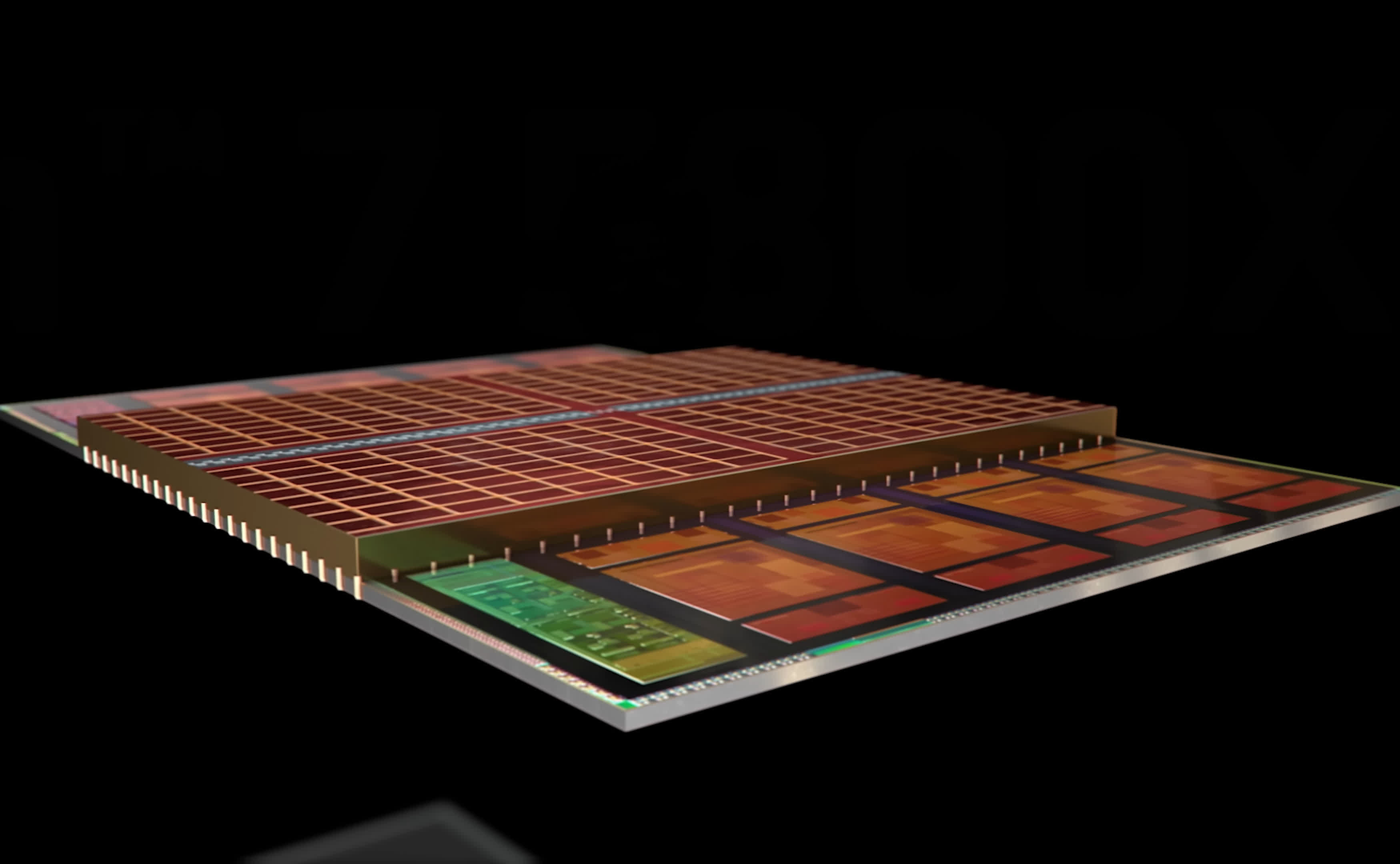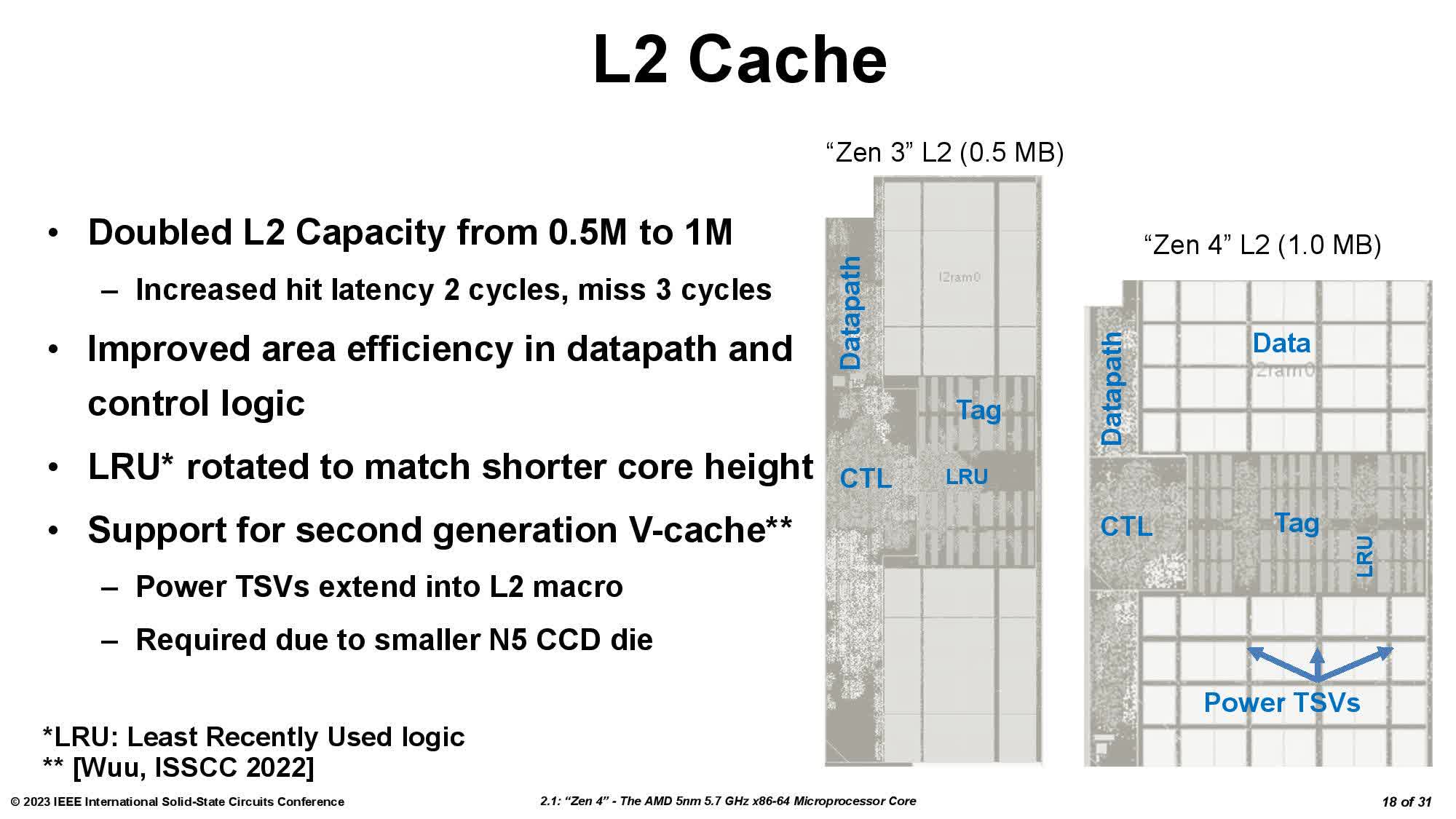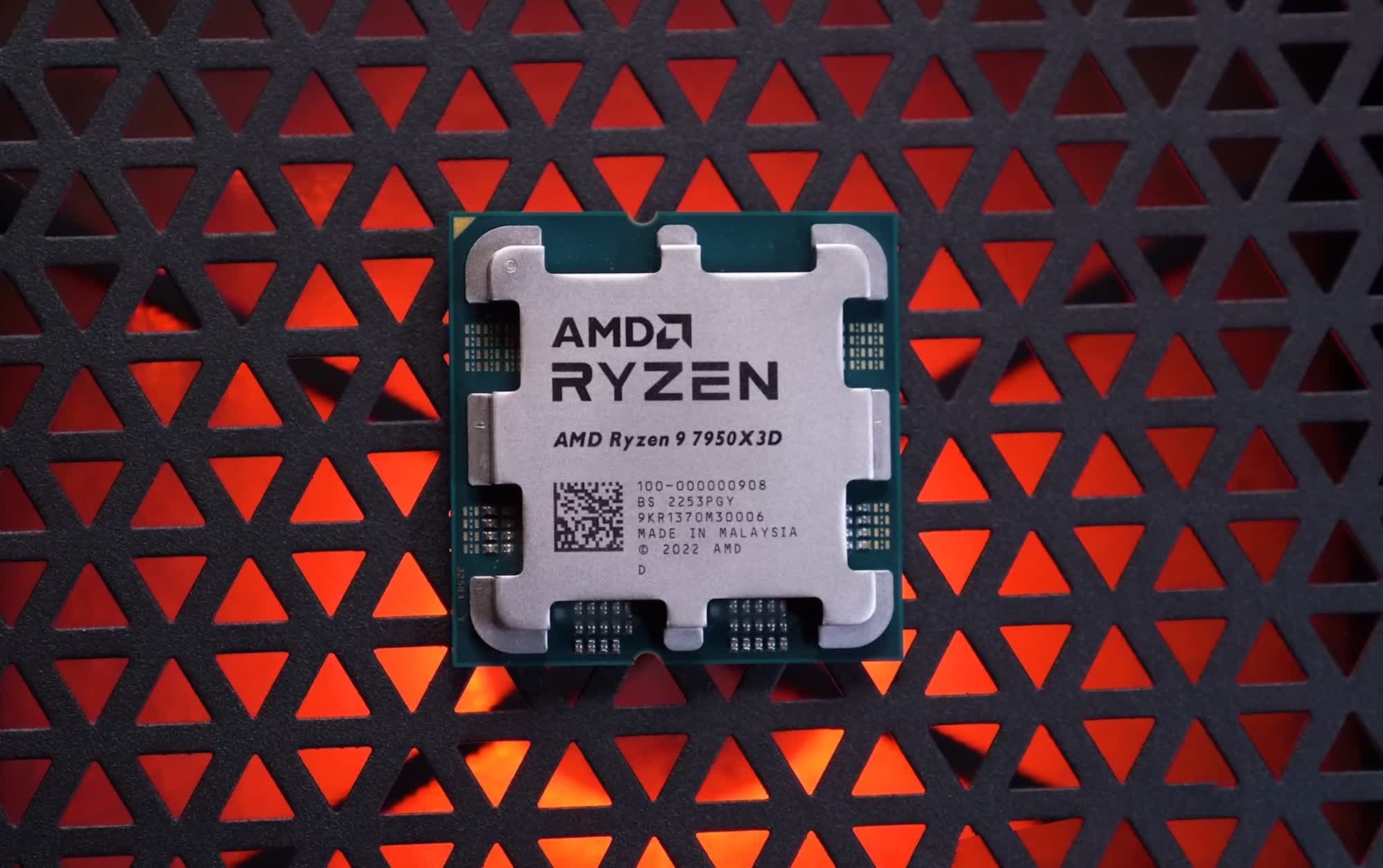In context: AMD launched the Ryzen 9 7950X3D at the end of last month and welcomed an enthusiastic response to its second-gen 3D V-Cache despite some mixed opinions about its usefulness in a 16-core CPU. Now they've shared some of the technical details that explain its performance.
AMD started mixing nodes in 2019 when it used the 7 nm node for the core complex die (CCD) and the 12 nm node for the IO die of the Zen 2 microarchitecture. AMD recently confirmed to Tom's Hardware that Zen 4 steps it up to three nodes: the 5 nm node for the CCD, the 6 nm node for the IO die, and the 7 nm node for the V-Cache.
AMD explained some of the challenges it faced stacking one node onto another during its recent ISSCC presentation. Both the 7950X3D and the original 5800X3D have their V-Caches positioned over their regular L3 caches to allow them to be connected. The arrangement also keeps the V-Cache away from the heat produced by the cores. However, while the V-Cache fits neatly over the L3 cache in the 5800X3D, it overlaps with the L2 caches on the edges of the cores in the 7950X3D.
Also read: AMD Ryzen 9 7950X3D Memory Scaling Benchmark

Part of the problem was that AMD doubled the amount of L2 cache in each core from 0.5 MB in Zen 3 to 1 MB in Zen 4. But it worked around the additional space constraints by punching holes through the L2 caches for the through-silicon vias (TSVs) that deliver power to the V-Cache. The signal TSVs still come from the controller in the center of the CCD but AMD tweaked them too to reduce their footprint by 50%.

AMD shrunk the V-Cache down from 41 mm2 to 36 mm2 but maintained the same 4.7 B transistors. TSMC fabricates the cache on a new version of the 7 nm node that it developed especially for SRAM. As a result, the V-Cache has 32% more transistors per square millimeter than the CCD despite the CCD being manufactured on the much smaller 5 nm node.
All of the refinements and workarounds AMD implemented add up to a 25% increase in bandwidth to 2.5 TB/s and an unspecified increase in efficiency. Not bad for nine months between the first and second generations of a supplemental chiplet. Hopefully it shows its value when the Ryzen 7 7800X3D arrives in a month's time.
